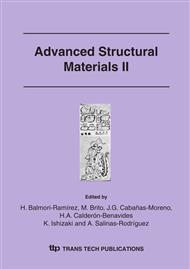p.75
p.81
p.87
p.93
p.99
p.105
p.111
p.117
p.123
Joining of Silicon Nitride to Metal (Mo and Ti) Using a Cu-Foil Interlayer
Abstract:
This work focuses on various aspects of diffusion bonding silicon nitride to Mo and Ti using a Cu-foil interlayer. Si3N4/Cu/Ti/Cu/Si3N4 and Si3N4/Cu/Mo/Cu/Si3N4 combinations have been diffusion joined at temperatures ranging from 950 to 1150 °C using different holding times in Ar. The results show that Si3N4 could not be bonded to Mo at temperature lower than 1100 °C even for holding times of 60 minutes, however, successful joining is achieved at 1150 °C. On the other hand, successful joining is accomplished at 1050 and 1100 °C for a Si3N4/Cu/Ti/Cu/Si3N4 sample. In the Si3N4/Cu/Ti system, joining occurs by the formation of a reactive interface with several reaction products on the metal side of the joint. All the silicon nitride samples have joined to titanium with no several interfacial cracking and porosity at the interface. The results corresponding to the Si3N4/Cu/Mo system show that a higher temperature is required to join the materials compared with the Si3N4/Cu/Ti system, since the formation of liquid produced by the interaction of Cu with Ti and Si promotes bonding and the high affinity of Ti for Si results in rapid interface formation.
Info:
Periodical:
Pages:
99-104
Citation:
Online since:
March 2006
Authors:
Keywords:
Price:
Сopyright:
© 2006 Trans Tech Publications Ltd. All Rights Reserved
Share:
Citation:


